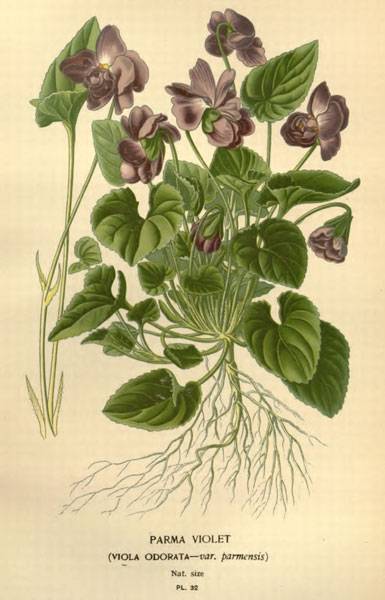Description of scented violet:
Viola odorata L. (Old or other familiar names: woodruff, lily of the valley) Violets – Violaceae 5 – 15 cm tall, perennial plant with spikes and tendrils. Its fruit is a flaky pod.
Occurs in:
Europe, Asia and America. In our country, it is common in shrubs, forest edges and even in gardens as a very popular plant.
Part to be collected:
Flower, which is sold commercially as flores Violarum, and also the leaf(folia Violarum). The flowers are five-petalled, one with a short and bluntly terminating spur, violet, rarely white. The leaves are curved and have a very pleasant smell. Leaves ovate to rounded, deeply cordate, short-haired. Palms ovate-lanceolate, glabrous at the edges, at most slightly ciliate at the apex.
Active ingredient:
Violin, cyanine (blue dye).
Harvesting and drying:
The leaf should be collected just before and during flowering, when the flower is fully open. The leaf should be dried in the attic and the flower in a mild oven. If an oven is not available, it may be dried in an attic. Not in the sun, as the colour will fade.
Cultivation:
After flowering, it can be propagated by propagation by cutting. It prefers a semi-shady place.
Processing and marketing:
Syrupus Violarum is made from it. In addition, it is used for incense blends and in the perfume industry. Source: Dr. Ferenc Darvas and Dr Gyula Magyary-Kossa,Domestic herbs, their production, marketing, effects and medicinal uses

